The recoiless rifle devil
In 1950s, the US Army Airborne started to look for a new air transportable tank destroyer. The last attempt, the WW2 M22 Locust was recoignised as a failure, due to the choices made of a balanced very light tank. Instead they looked for more firepower, if needed in a more unconventional package. The new vehicle was to be lifted by the common cargo aircraft of the time. In the late 1940s already the airborne explored that way by designing the 90mm Self-Propelled Anti-Tank Gun M56 Scorpion. It was the compbination of development studies by the Anti-Tank Panel in Fort Monroe, 1948.
The program T101 was awarded to Cadillac, and further developed during six years to delived the 4-crew SPAT (Self-Propelled Anti-Tank) M56. At the time, it was a rival to the SSM-A23 Dart Anti-Tank Guided Missile program also light enough to be paradropped. But the latter was delayed, which gave the M56 time to be ready in 1957, accepted for a production spanning from 1959 to 1962, with 253 vehicles. It was used extensively during the Vietnam War (173rd Airborne Brigade) but never gave full satisfaction. Another vehicle did: The M50.
Design development of the M50
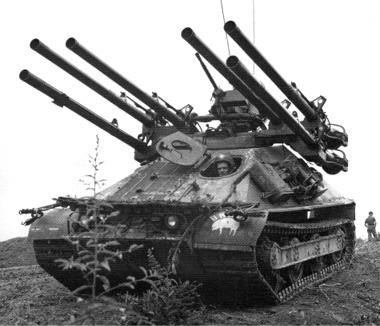
What became the M50 Ontos was the same concept, but studied by and for the USMC, ultimately superseded by the Sheridan. The Ontos (Greek "thing") was an air transportable tank destroyer. It could be lifted by cargo aircraft only ,as helicopter powerful enough to do the job would not be available befote the Vietnam era. Engineers workked out a design limited between 10 and 20 metric tons. For affordability and maintenance they choose the widely available six-cylinder GMC trucks egine. Allis-Chalmers obtained the contract for a prototype, and the first prototype was completed in 1952. It was based on the running gear of the M56 Scorpion. But instead of a 90 mm short barrel gun which recoil was just too much for the chassis, they went to another way: The recoiless gun.
Indeed, they had the simple idea of mounting cast steel turret with two arms, holding three rifles each. This looked like a kind of medusa, wich tentacles holds long tubes, perhaps an inspiration for the name. Anyway, the vehicle looked very menacing. This early turret was still capable to traverse 15 degrees, whh given the guns range seemed enough in good conditions. But the army was not impressed and ordered a serie of modifcations. So Allis-Chalmers designed a second prototype. It used a new suspension system and tracks, and a redesigned turret wich this time, had a 40 degrees traverse. The tradeoff of the design was its limited ammunition capacity, of only eighteen rounds, sotred inside the vehicle.
In addition, two of the recoilless rifles were paired with .50 BAT (12.7 x 77mm) M8C spotting rifles, attached over the barrel. Since the vehicle was too small and needefd to be kept lioght for a modern FCS, the simple solution of tracers for tergeting was used. The bullets gave off a flash and puff of white smoke on impact, allowing to "light" the target soon after the 106 mm recoilless rifles were lined up with the target. For defense against infantry, the M50 was provided with a single .30 caliber (7.62 mm) M1919 A4 machine gun in a railing above the turret's commander hatch, also usable for AA fire. So the vehicle was "bristling with guns" at least in appareance. The M8C spotting rifles were not able to fire regular bullets.
Mobility and protection
The M50 really looked like a futuristic "crab", with a prismatic hull over the chassis (engine at the rea) giving the best arrangement for protection: Despite its tall silhouette, it could accomodate its crew of three in the confines of the hull, the driver seating right forward (with the engine and transmission mounted up front left), the loader/radio was seated behind, with access to the ready rounds stored in the back of the vehicle, four over and eight under deck. The gunner/commander was seated in an elevated position to bet setup across the turret's hatch if needed for better visibility.The M50 Ontos had a AN/VRC 8 radio, installed to the left. Elevation of the recoiles arms was done from the gun mount T149ES around the turret. The gunner had a simple sight M20A3G mounted on top, with no infrared device. The vehicle was not protected NBC although all accesses (small turret hatch and driver's acces hatch on the glacis) could be sealed. The armor was light, to say the least, with the hull and turret receiving 0.5 inches (13 mm) and some protection from mines with a hull floor plated by .25 inch (6.5 mm).
The M50 was propelled by the General Motors 6-cylinder inline, 302 cubinc inches (4.95 l) gasoline engine. It developed 145 hp (108 kW) and allowed a top speed of 48 kph (30 mph), for an operational range of 185 km (115 mi). It was coupled with an Allison XT-90-5 transmission. Compared to regular tanks, even light like the M24 Chaffee, this was not impressive. However the six recoiless rifles gave the vehicle plenty of firepower in a single package. Paratrooped were not supposed to make an armored push but just defend and held a position between enemy lines, so as a semi-static defensive vehicle, the M50 was a good compromise.
Main armament
The 106 mm M40A1 Recoiless rifle was developed from the M27 in 1955 and soon proved an instant hit internationally. Its portabiliy meant it could be fitted on any light vehicle, like jeeps, enabling antitank capabilities at much longer distances than traditional bazookas. Its muzzle velocity was up to 503 m/s (1,650 ft/s) with the M344 HEAT, and effective firing range from 1,350 m (1,480 yd) up to 6,870 m with M346A1 HEP-T. The Six recoilless rifles could be supplied with 18 HEAT (high-explosive anti-tank), HEP (high-explosive plastic) or antipersonnel rounds. In addition the four .50-caliber M8C spotting rifles were supplied by 1,000 rounds. The single self-defense M1919A4 Browning .30-caliber machine gun was supplied by a box with 80 rounds. In addition to a 80° (cumulated) arc of fire, the turret's arms could elevated from +20 and depress to -10 degrees. The recoiless rifles coild be electronically fired in rapid scuccession to avoid a massive concussion, and yet secured an almost sure hit.A short production due to issues
The second prototype was extensively tested by the army at the Aberdeen Proving Ground. When firing all six weapons at once, the back blast was so powerful it knocked bricks in building far behinds, knocked rear windows and shatterred glass. The final testing stage was complete by 1955, at which point the Army cancelled its order. Despite its firepower, the vehicle had a small ammunition load, high profile, yet still cramped, and obliged to expose the crew outside to reload the guns. Despite the Army cancellation, the Navy was depesperate to acquire it and it went to serve with the Marine Corps ordering on August 12, 1955, 297 vehicles. Production ceased in 1957 and the first vehicle was accepted in service by 31 October 1956.Variants
The Utility Vehicle, Tracked, Infantry, T55
This was a light Armored personnel carrier (APC), two prototypes built. Proved impractical in tests, due its small internal space, for just five infantry.Utility Vehicle, Tracked, Infantry, T56
The "stretched" version of the T55, tested to accomodated more troops, actually an eight-man team. However it was still not enough and their equipment had to be carried strapped on the hull outside. Both were extensively tested and rejected from production.M40 Revolving autoloader
In 1960 a study was launched for a new 105 mm recoiless design using a barilet autoloader. This project never received funds and was abandoned.Rifle, Multiple 106 mm, Self-propelled, M50A1
Also a project, proposing a radical engine upgrade: A new Chrysler 361 cu in (5.92 l) V8 engine was to be fitted. It was tested, and accepted, but no new production was made. Instead, 176 out of the 297 vehicles were converted (1963-1965)as its new standard.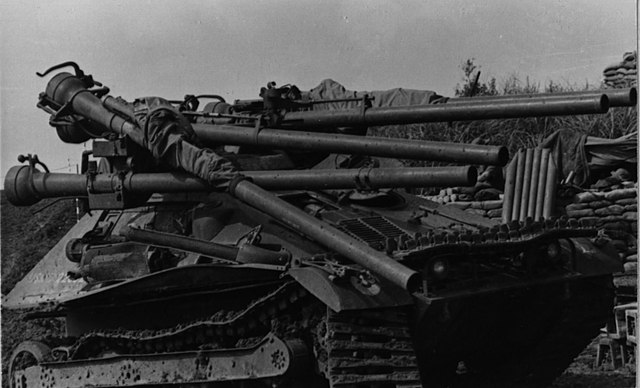
The M50 Ontos in service
Too late for Korea, the M50 was just on time for Vietnam, where it was seen as an improvement over the previous M56 Scorpion. Its light weight allowed to used Marines pontoon bridge, and it was nimble and relatively agile, albeit slow. But against all odds, its six 105 mm recoilless rifles never, if rarely, had to occasion to fire on any North Vietnamese tanks. Instead, it was mostly used for direct support in the jungle, with HE projectiles and shrapnel. Its major actions included the Battle of Hue (where it was praised by Colonel Stanley S. Hughes), and Operation Desoto, carried and deposed by CH-53 Sea Stallion helicopters (south Quan Ngai). It proved also vulnerable to mines and rocket-propelled grenades, and was found best in prepared defensive position and static perimeters. Although the low velocity of the guns had little effect on main battle tanks, it was used to knock on walls and blockhaus with ease. Its mere presence for the Vietnamese was enough for them to leave their positions.The last action of the Ontos came during the Dominican Civil war when on 29 April 1965 an M50 Ontos and M48 Patton (6th MEU) destroyed two rebel L/60L light tank, and the Ontos also destroyed an AMX-13 in another circumstance. The M50 served well until 1969, and was retired. It remained in the Marines inventory for many more years: Some were handed over to a single Army light infantry brigade, and as declared "limited standard", used until exhaustion of spare parts. Still, the turrets and their deadly rifles were used in fixed fortifications used later by the ARVN. The others, returned from Vietnam in 1970 were sold for scrap and some chassis sold off and converted unto various civilian uses. In turn they made it to collectors for restoration. Thetefore 15 survived to this day, in varios museums and private collections.
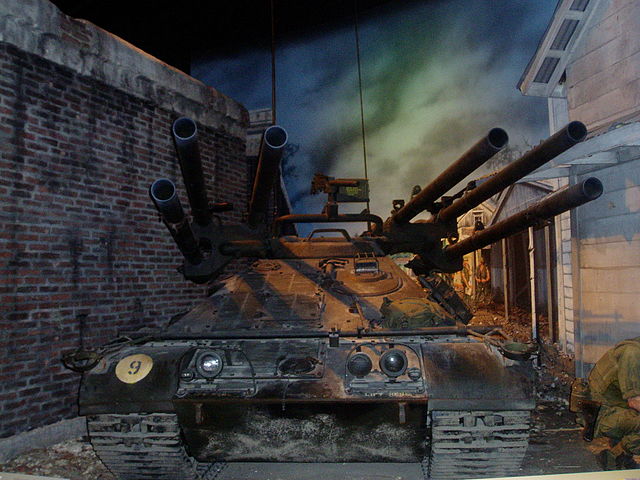
Links/Src
On WikipediaOn archive.org
Article cut
During the Dominican Rep. Civ. war
mcvthf.org
diggerhistory.info
More photos CC in Vietnam
Books:
Estes, Kenneth W (2016). M50 Ontos and M56 Scorpion 1956–70: US Tank Destroyers of the Vietnam War. New Vanguard 240. Osprey Publishing.
Kutta, Timothy J., "ONTOS: The USMC's Most Famous Anti-Tank Weapon", Modern War magazine, Bakersfield, California: Strategy & Tactics Press (Decision Games)
McNab, Chris (2003). Military Vehicles. Hoo, Kent, UK: Grange Books. p. 56.
M50 Ontos and M56 Scorpion 1956-70 : US Tank Destroyers of the Vietnam War, H. Morshead, J. Shumate, Osprey New Vanguard.
M50 Ontos specifications | |
| Dimensions (L-w-H) | 5.03 x 2.54 x 2.69 m () |
| Total weight, battle ready | 13.791 tons (18,800 lbs) |
| Crew | 10 (1 driver, 9 crew) |
| Propulsion | Continental R6572 six-cyl., Gas. 207 hp |
| Maximum speed | 48 km/h on road, 15 hp/t |
| Suspensions | Vertical volute springs |
| Range | 290 km (?? mi) |
| Armament | Cal.50 Browning M1920 (12.7 mm) M2HB heavy machine-gun |
| Armor | 7 mm (0.25 in) max. |
Illustration references
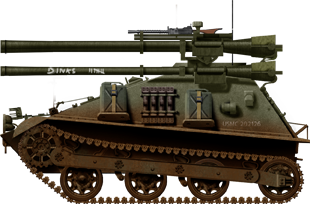
M50 Ontos
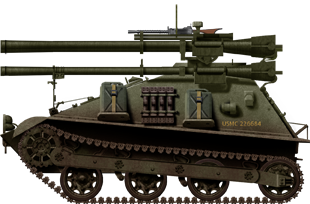
M50A1, 1st USMC antitank Bat. Chu Lai May 1966
Videos
Technical Manual

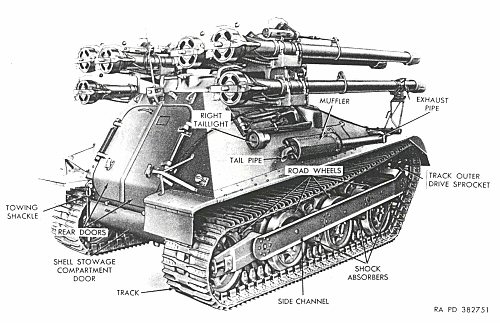
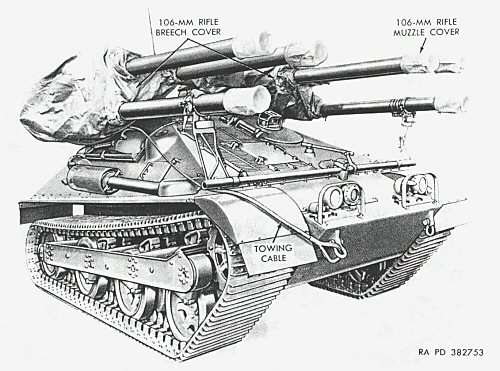
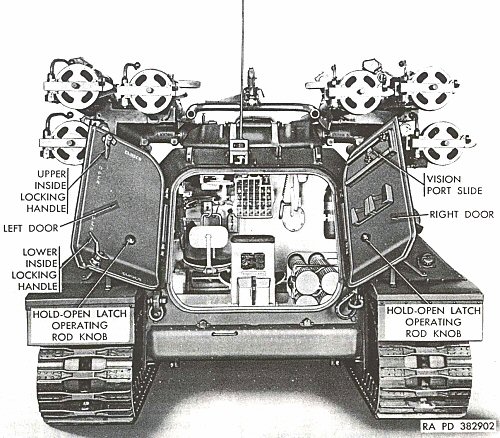
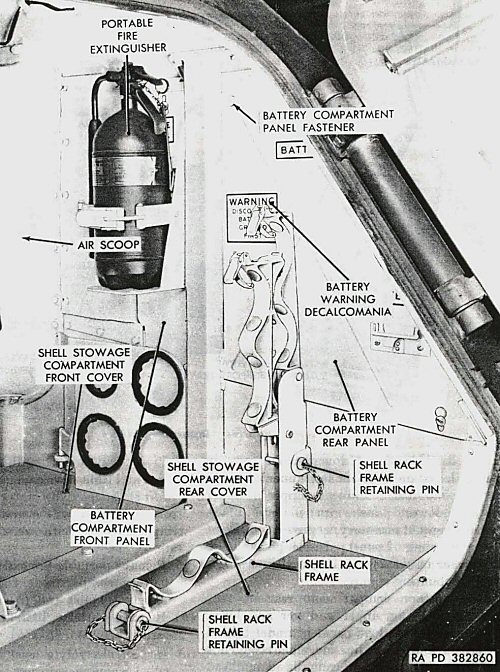
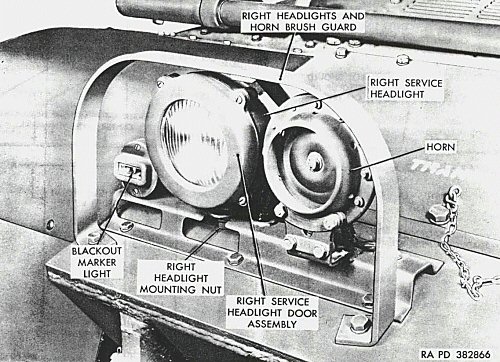
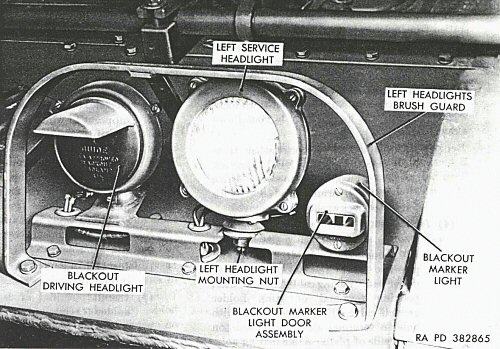
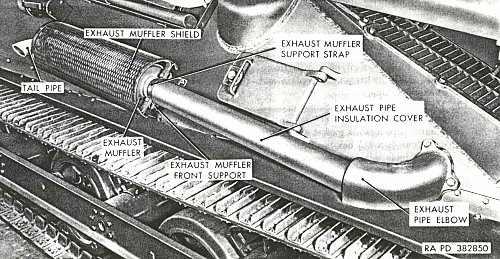
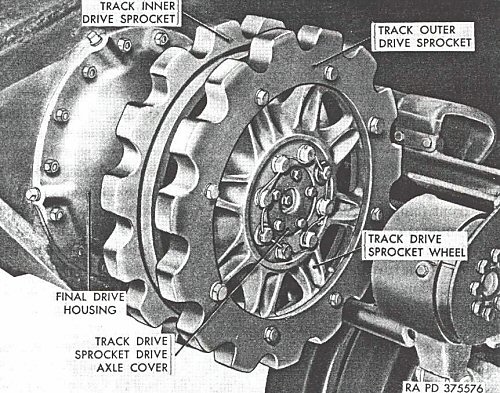
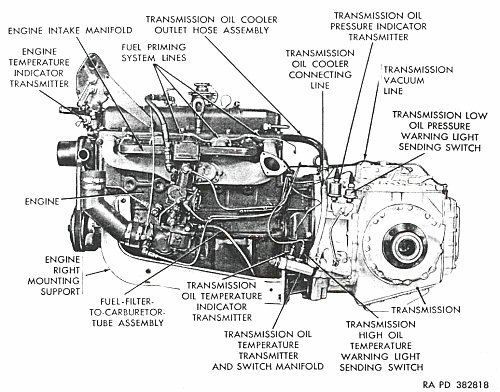
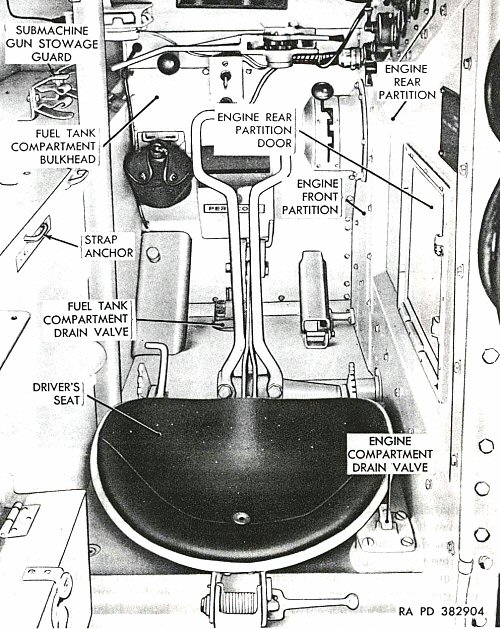
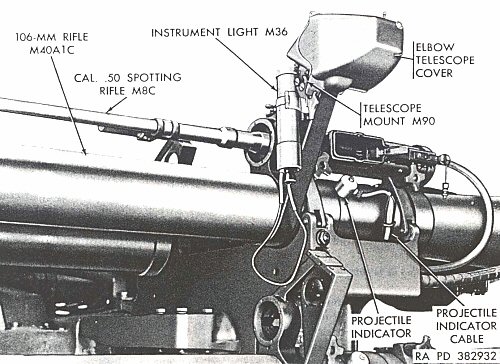
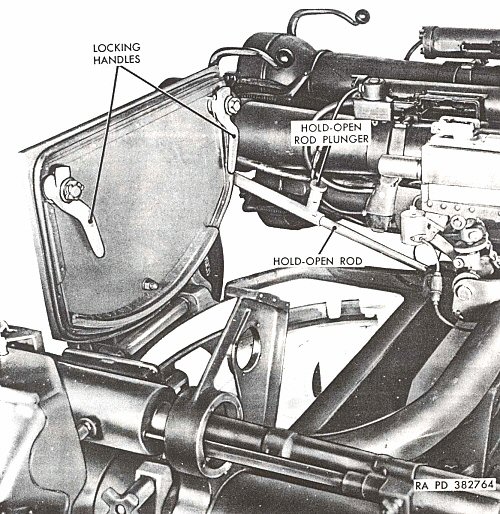

Photos

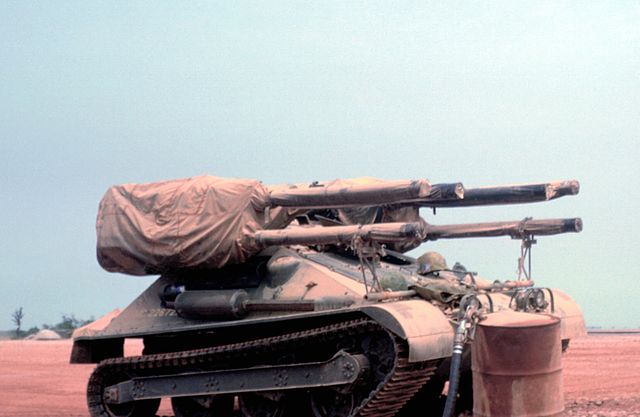
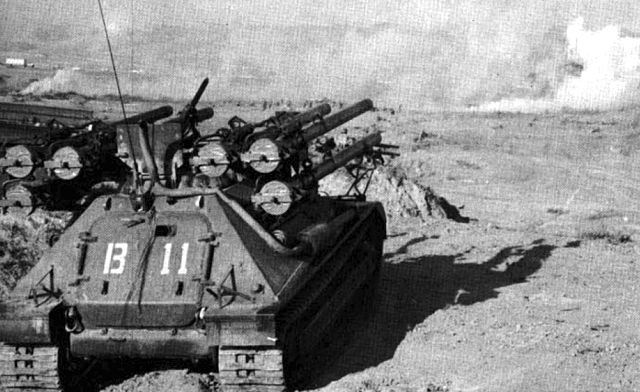
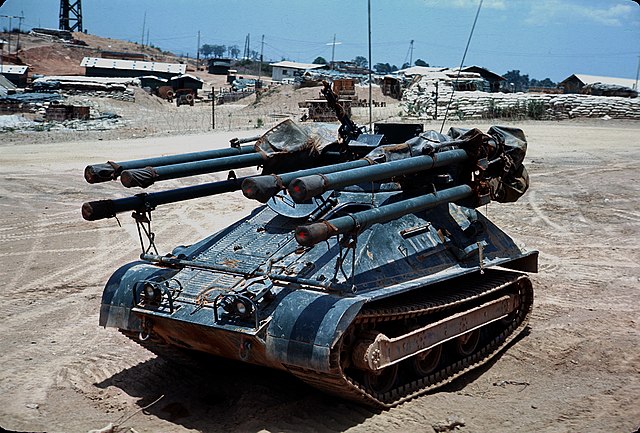
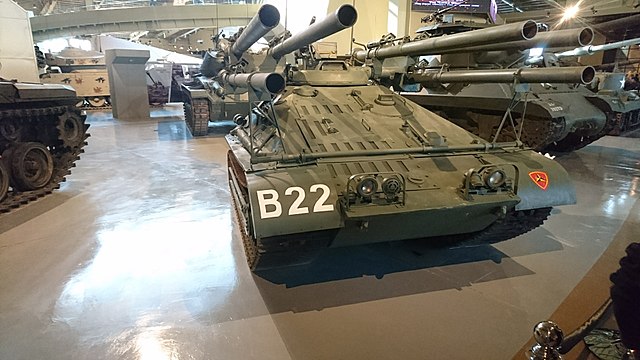
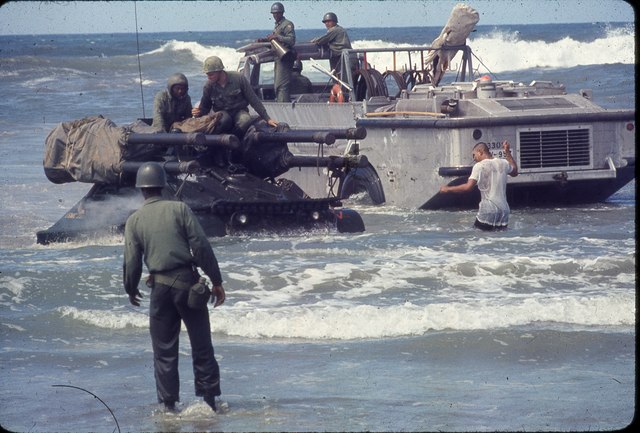

Cold War Tanks


































Cold war tanks posters

Cold War Main Battle Tanks

Cold War Soviet Army
Museums, Movies, Books & Games
The Tanks and Armor in pop culture
Tanks and armored vehicles in general are only really grasped when seen first person: The mass, the scale, it's all there. Explore also the way tanks were covered in the movie industry, in books and in video games.Movies:
Best tanks movie on warhistoryonline.com
On imdb.com
On bestsimilar.com/
miltours.com
liveabout.com/
watchmojo.com
Video Games:
pcgamesn.com
historyhit.com
levvvel.com
vg247.com/best-tank-games
mmobomb.com/
alienwarearena.com


